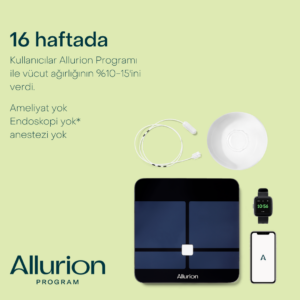 General Information
General Information
The gallbladder is a pear-shaped organ attached to the lower surface of the liver in the upper right side of the abdomen. Its function is to store and concentrate some of the bile produced in the liver during starvation. Following food intake, the stored bile passes into the duodenum via the bile duct and is involved in food digestion and the absorption of fats and fat-soluble vitamins.
Why Gallbladder Stone Forms?
Bile contains substances such as cholesterol, lecithin, bilirubin and calcium. Disturbance of the balance in its chemical components plays the main role in stone formation. The solubility in the bile fluid decreases and the fluid condenses. Some substances that need to be excreted crystallise and precipitate. The precipitated particles combine with the gelatinous substance secreted from the gallbladder wall and become bile sludge. With the deterioration of the contraction and relaxation of the gallbladder and the secretory function of the inner wall, a harder core is formed over time and becomes a gallstone.
Findings in Gallbladder Stone
Gallbladder stones may be asymptomatic or may be manifested by pain that starts in the right upper part of the abdomen and radiates towards the back. The pain may be in the form of a cramp, or it may be constant in inflamed cases and its intensity does not decrease, and fever may be detected. Nausea, vomiting, loss of appetite and indigestion may occur. If the stones fall into the bile duct and cause obstruction in the bile duct, jaundice is seen. There are 5 main pictures that can be caused by gallstones. Acute cholecystitis (inflammation of the gallbladder), choledocholithiasis (main bile duct stone), pancreatitis (inflammation of the pancreas due to gallstones), gallstone ileus (intestinal obstruction), cholangitis (inflammation of the bile ducts).
Tests in Gallbladder Diseases
Ultrasonography is the main imaging tool in gallbladder stones after anamnesis and examination. MRCP may be preferred when a detailed evaluation of the bile ducts is required. Computerised Tomography is guiding in the presence of inflammatory disease or suspicion of cancer. ERCP, which is a non-surgical method, can be performed when a procedure for stones in the bile duct is required.
Gallbladder Inflammation
It usually occurs when a stone in the gallbladder blocks the duct and prevents the gallbladder from emptying. The gallbladder swells, oedema and circulatory disturbance occur in its wall. The deterioration is likely to progress and result in perforation. In inflammatory conditions, pain is constant and does not decrease in intensity, fever may be detected. Nausea, vomiting, loss of appetite and indigestion may accompany. If the diagnosis is made, early surgery is recommended if it is detected at an early stage and if there is no obstacle to surgery. Antibiotic treatment and an emptying tube into the gallbladder (cholecystostomy) may be recommended in the presence of concomitant medical problems or delayed presentation. Surgery is recommended for these patients after the inflammatory event has subsided and before a second attack develops.
Gallbladder Polyp
They are millimetric soft tissue masses in the form of mushroom-shaped, stalked-clustered form originating from the inner layer of the gallbladder wall. Patients over 60 years of age, polyps associated with gallstones, polyps that increase in size rapidly during follow-up, and polyps larger than 10 mm in size are recommended for surgery due to the risk of cancer development.
 Treatment of Gallbladder Stone
Treatment of Gallbladder Stone
Surgery is not recommended for gallstones detected incidentally in a patient with no complaints and for elderly patients with no complaints. Surgery is recommended for patients with millimetric stones such as sand and mud. Because such stones are more likely to pass into the bile ducts and cause obstruction. As a result of obstruction, jaundice, pancreatitis and more serious secondary problems may develop. Surgery is also recommended for stones larger than 2 cm in size, as it is known that they can damage the bile ducts with the effect of compression and increase the risk of developing gallbladder cancer in the long term.
Laparoscopic Cholecystectomy
It is a camera-guided surgery performed with special devices of 0.5-1 cm in size inserted through the abdominal wall. The basis of the operation is the removal of the entire gallbladder. for this purpose, the duct and vein of the gallbladder are closed with titanium and plastic staples and the sac is separated from the liver bed. the procedure is performed under general anaesthesia.
Open Cholecystectomy
The first choice for gallbladder removal is laparoscopic surgery. Although very rare, there may be patients who require direct open surgery or who need to return to the open technique during a laparoscopic surgery. In case of difficulties in grasping and grasping the tissues due to inflammation of the gallbladder, in the presence of peripheral adhesions that cannot be separated in the tissues due to ongoing inflammation or previous surgeries, in the presence of structural abnormalities of the biliary tract or additional problems of the biliary tract, there should be no hesitation to return to open surgery if a safe image cannot be provided by laparoscopic method.



4 Comments
Coşkun Soydemir
January 8, 2021I learnt yesterday that a stone with a diameter of 18mm was found in my gallbladder. There were also a few stones of millimetric size and a small amount of sludge. Can you give detailed information about the operation? Should I prefer the laparoscopic method? Thank you..
Op. Dr. Gülden Ballı
January 9, 2021Hello Coşkun Bey, when the decision to operate on gallstones is made, laparoscopic (closed) gallbladder surgery is the most preferred method in our country as in the whole world. It has many advantages such as less postoperative pain, less scarring, faster recovery. To discuss these and the road map, you can contact my assistant on 0 (546) 4328384 and make an appointment. Get well soon
Muhammed koc
December 11, 2020Is there any harm if there is a stone in the gallbladder vsr4mm very urgently surgery is required due to the pandemic, state patients do not do your information tşklser
Op. Dr. Gülden Ballı
December 12, 2020The timing of the operation varies from patient to patient. Therefore, your examination and examinations are important. Get well soon